Gabriella A. Rebata, Clare O’Brien, John Bates, Natasha Pederson, Dr. Lisa Meierotto
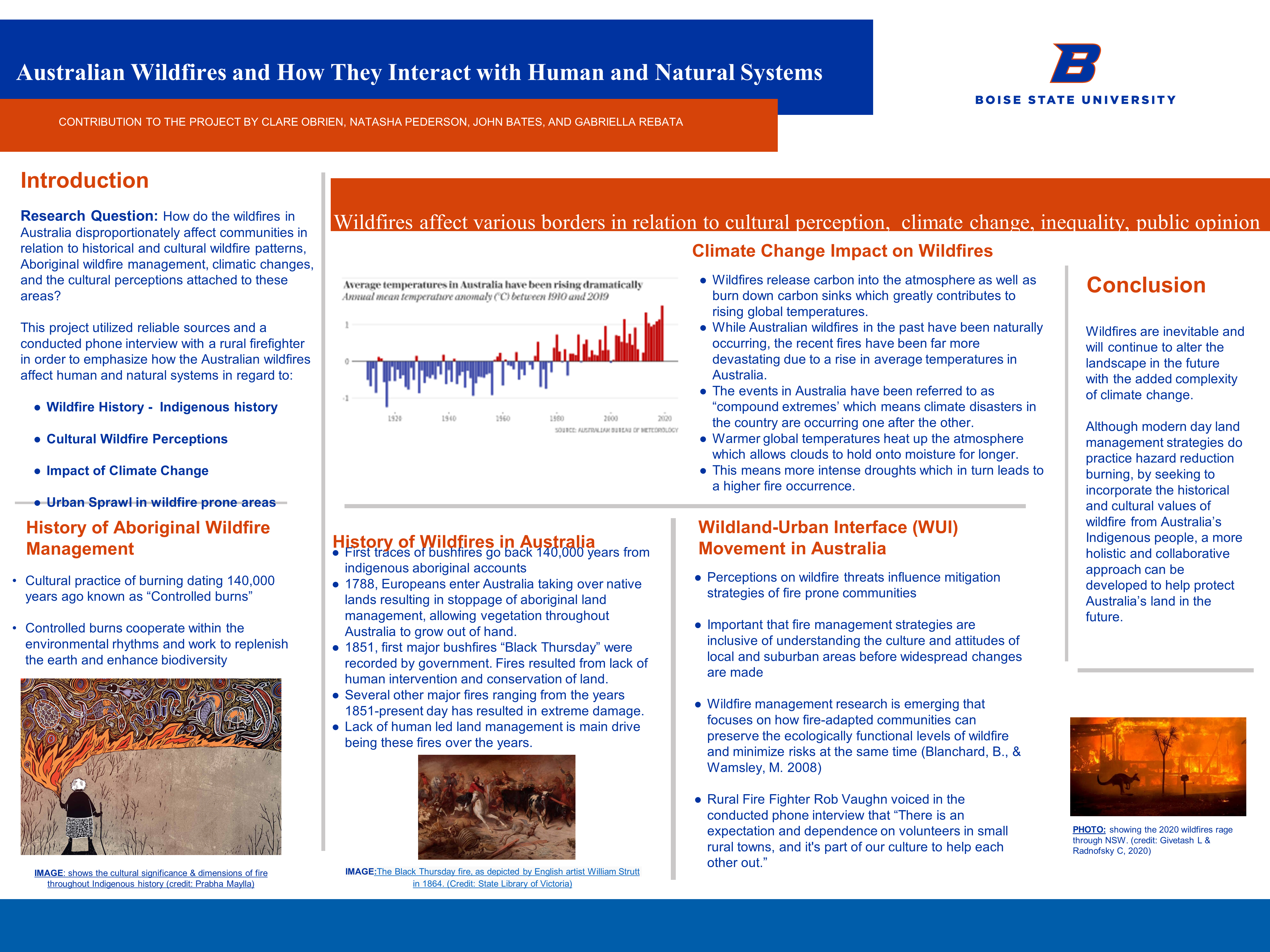
Introduction
Research Question
How do the wildfires in Australia disproportionately affect communities in relation to historical and cultural wildfire patterns, Aboriginal wildfire management, climatic changes, and the cultural perceptions attached to these areas?
This project utilized reliable sources and a conducted phone interview with a rural firefighter in order to emphasize how the Australian wildfires affect human and natural systems in regard to:
- Wildfire History – Indigenous history
- Cultural Wildfire Perceptions
- Impact of Climate Change
- Urban Sprawl in wildfire prone areas
History of Aboriginal Wildfire Management
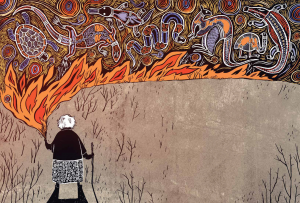
Cultural practice of burning dating 140,000 years ago known as “Controlled burns”
Controlled burns cooperate within the environmental rhythms and work to replenish the earth and enhance biodiversity
History of Wildfires in Australia
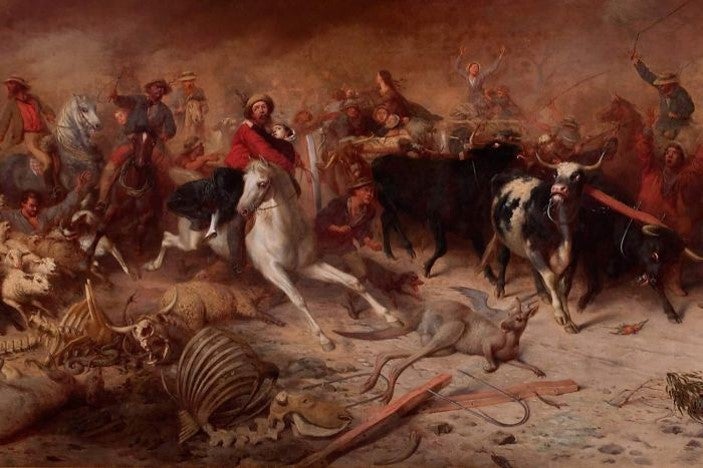
- First traces of bushfires go back 140,000 years from indigenous aboriginal accounts
- 1788, Europeans enter Australia taking over native lands resulting in stoppage of aboriginal land management, allowing vegetation throughout Australia to grow out of hand.
- 1851, first major bushfires “Black Thursday” were recorded by government. Fires resulted from lack of human intervention and conservation of land.
- Several other major fires ranging from the years 1851-present day has resulted in extreme damage.
Lack of human led land management is main drive being these fires over the years.
Wildfires affect various borders in relation to cultural perception, climate change, inequality, public opinion
Climate Change Impact on Wildfires
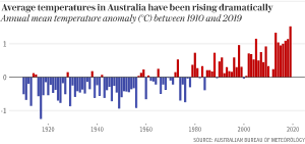
- Wildfires release carbon into the atmosphere as well as burn down carbon sinks which greatly contributes to rising global temperatures.
- While Australian wildfires in the past have been naturally occurring, the recent fires have been far more devastating due to a rise in average temperatures in Australia.
- The events in Australia have been referred to as “compound extremes’ which means climate disasters in the country are occurring one after the other.
- Warmer global temperatures heat up the atmosphere which allows clouds to hold onto moisture for longer.
- This means more intense droughts which in turn leads to a higher fire occurrence.
Wildland-Urban Interface (WUI) Movement in Australia
- Perceptions on wildfire threats influence mitigation strategies of fire prone communities
- Important that fire management strategies are inclusive of understanding the culture and attitudes of local and suburban areas before widespread changes are made
- Wildfire management research is emerging that focuses on how fire-adapted communities can preserve the ecologically functional levels of wildfire and minimize risks at the same time (Blanchard, B., & Wamsley, M. 2008)
- Rural Fire Fighter Rob Vaughn voiced in the conducted phone interview that “There is an expectation and dependence on volunteers in small rural towns, and it’s part of our culture to help each other out.”
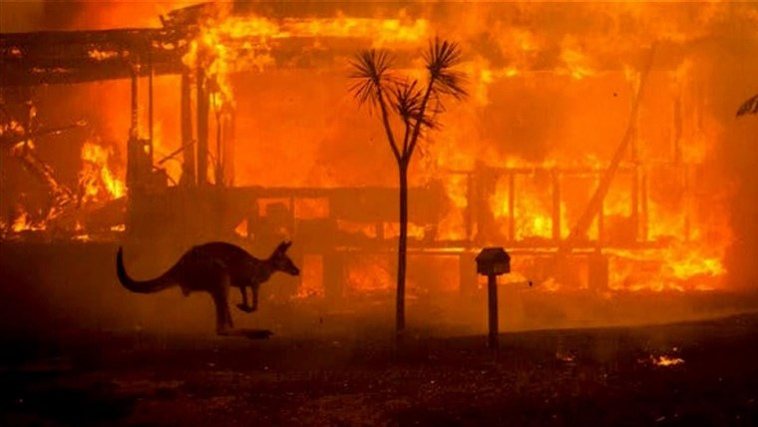
Conclusion
Wildfires are inevitable and will continue to alter the landscape in the future with the added complexity of climate change.
Although modern day land management strategies do practice hazard reduction burning, by seeking to incorporate the historical and cultural values of wildfire from Australia’s Indigenous people, a more holistic and collaborative approach can be developed to help protect Australia’s land in the future.